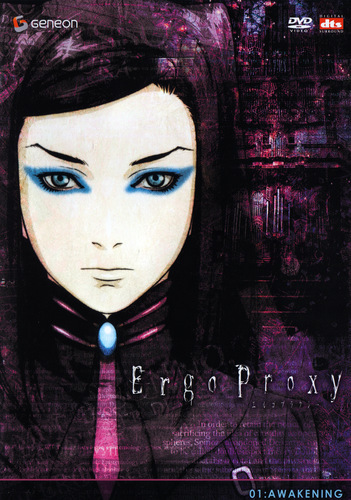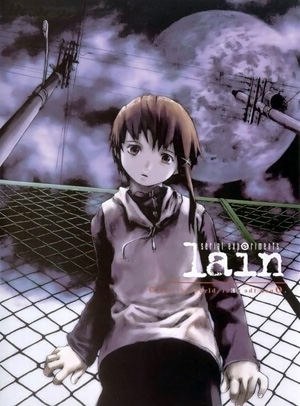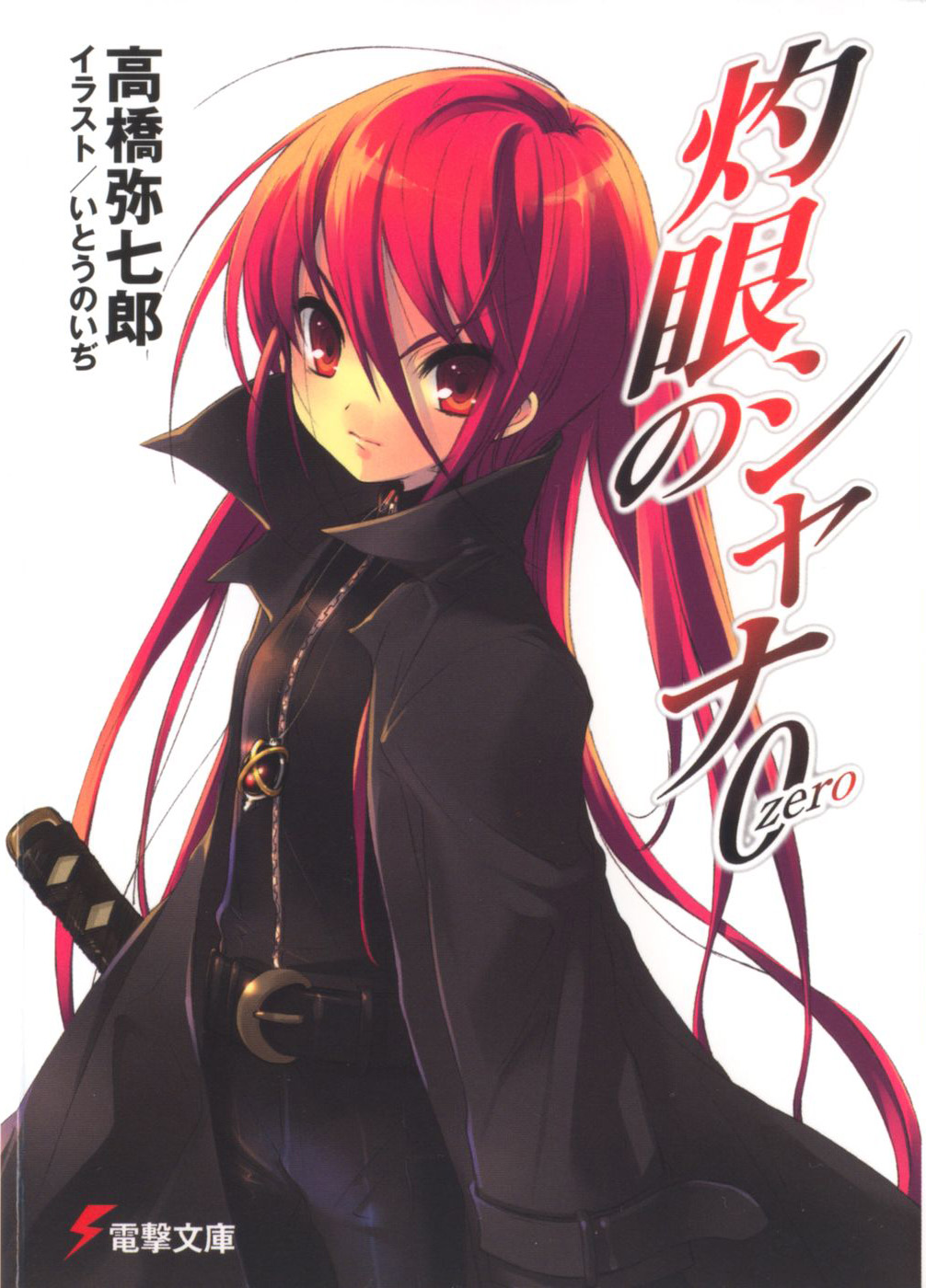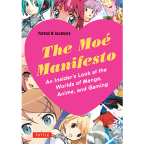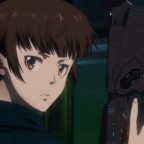Nadav
Ouran High School Host Club Blu-ray Review
Finally! Watching 26 episodes for a weekly review is hard! There’s even a nice little video in the end! So I command you to go read the review even if you aren’t interested in the actual series! Just kidding
Have you noticed the upcoming review status bar on the right? I’ll be updating my review status there. That way the blog itself won’t be filled by “still watching X” or “expect the X review in two days” and so on.
Top 10 Forgotten Anime List (part 3)
It’s the last part of the list, full of forgotten goodies that should be should be savored earlier then later. Before you read the last three titles, here’s a trick question: during the writing process of this list I’ve found an interesting pattern which all the of these forgotten series share. Have you noticed it yet?
Saber Marionette (including J Again and J to X)
Short introduction:
Summing up Saber Marionette is hard, but if I had to dilute it I’d say it’s a comedy driven action series with an apocalyptic science fiction background. Saber Marionette was an eye candy full of action, silly antics and girl harems. It also had a metaphoric side to it. It showed a world in which men have given up on women and have come to love women-shaped robots called Marionettes. At its core Saber Marionette mirrors Japan’s otaku society, in which people get attached to their favorite figurines/idols/series and give up on having a real-life relationship with women/men.
Saber Marionette was separated into three consecutive seasons, called J, J Again and J to X respectively. Saber Marionette J aired in Japan in late 1996 and early 1997. It was later released by Bandai Entertainment on VHS tapes in 1999 (and later on DVDs). The second and third seasons were also released by Bandai.
Current State:
The series is still license by Bandai Entertainment, and surprisingly enough Saber Marionette J is still in print today. Sadly, the same cannot be said for J Again and J to X, which have been out of print for years now and have practically vanished from the face of the earth.
Chance of revival:
Possible. The Saber Marionette franchise is old yet surprisingly sturdy. The demand for classics such as Saber Marionette has instigated the resurgence of several series from the 90s, including even older series such as Slayers and Fist of the North Star. However, Bandai Entertainment is not the one releasing these classics and has publically announced that it will not reissue any of its old franchises. Furthermore even if relinquished from Bandai’s hands (by the license expiring of course) it is questionable whether an old classic like Saber Marionette will be re-licensed in today’s waning anime market.
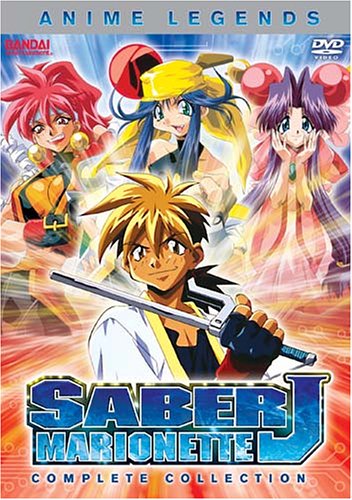
Short introduction:
A melancholic tale about angels who are born into a purgatory-like environment, Haibane Renmei asked hard questions about Christianity, salvation and the value of one’s life. Haibane Renmei wasn’t afraid to talk about or portray to true meanings of death, but did so gently and skillfully. The series aired in Japan during 2002 and was released by Geneon Entertainment (then still called Pioneer) in late 2003 and early 2004. Haibane Renmei is regarded as a masterpiece, and has recieved great praise in Japan and the U.S. alike.
Current State:
The series is unlicensed. The prices of the series box set as well as the individual DVDs have soared into the skies.
Chance of revival:
Very Good. Just like Lain, Haibane Renmei has recieved a retouched and extended Blu-ray edition in Japan in 2010. And just like Lain, FUNimation has been showing interest in acquiring the license to this evergreen title. Considering the artistic and intellectual values embodied in Haibane Renmei it is without a doubt one of those series that are sure to make a silent comeback in a year or two.
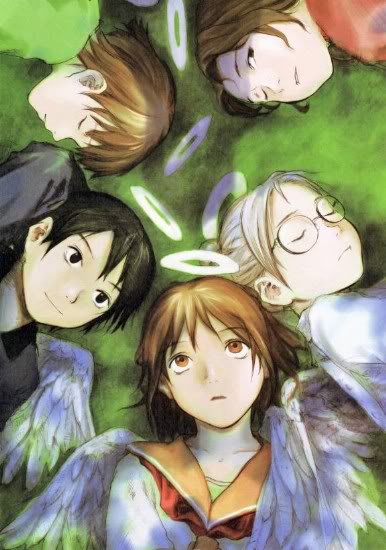
Short introduction:
A mature take on virtual reality and MMORPGs, .hack//Sign was a precursor to the upcoming popularity of massive online gaming. Instead of succumbing to shallow representations of actual role playing games .hack//Sign focused on the mentality of the players behind the characters. It delved deep into philosophical questions, such as what defines a human being? And can a game trick our minds into seeing or feeling things?
.hack//Sign was also a visual and audio wonder. There has yet to be another anime which uses its music in such a strong and influential way as .hack//Sign did. The series was released in Japan during 2002 and was released in the U.S. by Bandai Entertainment between 2003 and 2004. It was very successful and its plot was continued in an ever-expending chain of games, anime series, manga and books.
Current State:
The series is still license by Bandai Entertainment, but has gone out of print and is disappearing gradually. The reason the series has managed to remain available for so long stems from the fact that it received no less than 3 different editions in the U.S, in less than 4 years!
Chance of revival:
Possible? The entire .hack franchise, in all its incarnations, is the property of Bandai (Namco Bandai Japan to be exact). Hence Bandai cannot lose the license to a series which it itself created. That said, Bandai has opted to license its series to other companies in the upcoming years, which means the license to .hack//Sign can be acquired even today. FUNimation is currently set on releasing the latest iteration in the series, called .hack//Quantum, in February. Rumor has it that if .hack//Quantum performs very good FUNimation may consider licensing other series in the franchise. There might still be hope for this rare gem yet.
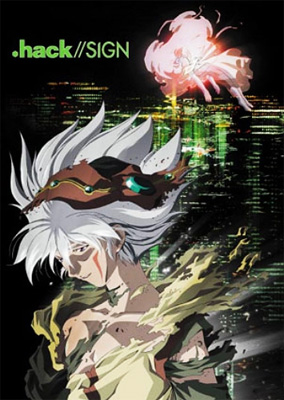
So what did we learn from this list? A lot of the (best) forgotten anime series are set on making a comeback in the upcoming years. FUNimation is possibly the only U.S. distributor with the will and power to relicense lost series, and I am thankful that it indeed intends to do so. Obviously, there are many more old forgotten series that fans hope will resurface eventually (Sailor Moon anybody?). This list is my personal interpretation and consists of series which I not only consider as anime but also conceive as art. Forgotten they may be, but demand for them has not been muffled by the dusty touch of time. I shall patiently await their return. And so should you.
The Future of the U.S. Anime Market
The start of a new year and the closure of Bandai USA have brought forth avid discussions about the future of anime in the U.S. Some forecasts are grimmer than others, and some are spot-on. So what should we expect from the U.S. anime market in the following years? I’ve decided to share my view of things with you.
Japanese companies will sell anime as direct-imports
That’s right. Just like Aniplex of America has been doing for the last two years, with great success if I may add, other Japanese companies will opt to remove the American distributors out of the equation and sell imports of their products directly in the U.S. These direct imports will have English subtitles and probably maintain all of the goodies presented in the original Japanese limited edition. They will also be available simultaneously with the Japanese release. In turn, the prices people will pay for these direct imports will correlate to the Japanese price, which means fans will be paying much more for their coveted series. Mind you, companies like TSRI have already jumped the gun and offer these direct-imports at a small discount which helps soften the blow.
Japanese companies will expect us to buy directly from Japan
Some Japanese companies will not even bother with exporting their series to the U.S., instead leaving it up to the fans to find a venue to buy from and import their English subtitled series. Some of these series will not be available to the U.S. audience in any other way, forcing those who truly cherish their anime to fork over considerable amounts of dollars yens.
The popularity of streaming will grow, but not by much
Streaming is good. It allows potential buyers to see a sample of the series that interests them before making the buy. Moreover streaming gives you access to more obscure licenses of series that never received physical copies or are out of print. It’s even cheaper than buying actual copies and it still supports the overall anime industry. The downside? There are so many streaming services, and most require you to sign up and pay a monthly fee. Netflix, PSN, XBL, Hulu, Crunchyroll, FUNico, ANN, Amazon Instant Video…so many services to decide from. What happens when you have three series you like, but each is on a different service?
Sadly, there is a more fundamental problem in streaming than just choosing which service to use: streaming is just not popular yet outside of the U.S. and so the revenues to extract from such a prospect don’t justify themselves. Streaming is almost unheard of in Japan. Why stream something at low quality when you can just subscribe to the TV channel that airs the thing? The exceptions that are streamed (like live performances on NicoNico) are usually shown for free or for a one-time fee. Streaming hasn’t taken Europe by storm either, because each streaming company has to ask the Japanese anime companies for permission to air their licensed series in Europe, and then receive permission to air the content from the TV authorities in the European country they wish to air the series at. In short, it’s a bureaucratic hell which will probably amount to nothing in the end. And streaming anime in the Middle East? Don’t make me laugh. Nor the Japanese companies nor the American distributors care for such a small market.
So in the end we are left with the U.S. alone. While there is certainly space for anime streaming services to grow within the U.S., these are the trickles of a stream that is already tapped.
U.S. distributors will become even more competitive
More limited editions and complete box sets, pre-order trinkets by the gallon, and attractive discount to whoever buys two or three series as a bundle. U.S. distributors know how to reel in the elusive fans and will not go down without a fight. This competitive nature will also reflect the shelf-life of certain series. A lot of series are bound to receive a very limited print run which will render those series out of print a couple of month following their official release. Why is such a policy good? It allows distributors to calculate the minimum demand for the product to assure that all copies will sell. For the anime companies, it is better to produce 2000 copies and completely sell out, than to release 10,000 and have only half of them sold. If the U.S. distributors are here to stay some compromises will have to be made. The dedicated fans will have to be more dedicated and buy the product on day one. They will in turn be compensated by being the proud owners of a very limited edition with prime boxes, the highest video and audio quality available and maybe a nice little collectible item.
This trend isn’t about to start, it’s already happening as we speak. Did you get your ludicrous over the top Ouran High School Host Club Blu-ray set? Or maybe the super limited edition of the Oreimo DVDs? Well, I hope you already bought them if you wanted them, because they were out of print a month or two after release.
U.S. distributors will export to reach a higher sales margin
Well, to be perfectly clear certain retailers in Japan will start stocking up on anime titles from FUNimation, Sentai and the like. Japan and the U.S. share the same Blu-ray region and anime on Blu-ray is much cheaper in the U.S. than it is in Japan. Hence reverse-imports offer the Japanese customers a nice cheap “American Edition”. Not only do they get their series for much cheaper, it also comes with an option for English subtitles and maybe even an English dub (ideal for those diligent Japanese students who want to perfect their English). In return those who buy reverse-imported copies stand to lose some of the extra content found in the original Japanese Blu-rays (a lot of extras don’t find their way into the U.S. Blu-rays and the Japanese couldn’t care less about English bloopers or commentary by the American cast). The U.S. Blu-rays also arrive fashionably late, which means reverse-importers need to have some patience in return for a cheaper price.
Think the idea of Japanese retailers stocking up on U.S. anime Blu-rays is far-fetched? Amazon Japan recently began to do just that. Series from FUNimation like Full Metal Panic, Angel Beats!, High School of the Dead, Samurai Girls and Claymore are already in stock there, and can be bought for a much cheaper price than their dated original Japanese releases. If the Japanese companies seek to take a chunk out of the U.S. Blu-ray market by directly exporting their products, why shouldn’t American companies take a chunk out of the Japanese Blu-ray market? The global anime market is a tough frontier, and the fiercer your rivals are the fiercer you’ll get.
We’ll see much much more “classic” releases
Remember those awesome anime series that brought upon the anime craze in the U.S. during the end of the 90s and the beginning of the millennium? Most of these series were targeted at a broad audience and focused on plot. Let’s face it, they don’t make these as much as they used to, and their impact on the western world has also weakened considerably. In fact people have been reciting for years that the moefication of anime, which has made anime so much more profitable in Japan, has been choking the western anime markets. The solution? Release those awesome classics again! Old fans could use updated retouched Blu-ray copies of their old VHS and DVDs, while new fans can discover the joy of anime that started it all in the west in the first place. I will be the first to admit that classics cannot support the U.S. anime market on their own (we need modern hits nonetheless), but they sure make up for all the unmarketable anime Japan keeps spawning up in recent years.
Bandai Entertainment USA Folds
What a bad way to start 2012! As you might have heard by now Bandai Entertainment, the U.S. based subsidiary of Namco Bandai Japan, will stop releasing new titles in February. That includes all of the companies’ manga and anime line. According to the ANN’s article:
“Bandai Entertainment will focus on licensing rights to other companies, particularly in digital distribution, broadcast, and merchandising.”
This in fact translates to “Bandai Entertainment will close its offices, but a representative will be kept in the U.S. in case any of the other U.S. based anime distribution companies wants to license a series directly from our Japanese firm.”
All the series Bandai Entertainment already released will remain in print for now, so there’s no need to panic even if you managed to miss one of Bandai’s releases along the way. But Bandai’s statement that it will stop releasing new titles is a bit enigmatic. Licensed series which have not been published yet are one thing, but what about series Bandai has been churning out in earnest, but haven’t been fully released yet? Will Bandai ever finish releasing Tales of the Abyss? and what about the second season of the very popular K-ON? These are series which were released in tiny little bits instead of a fully fledged complete series box set, and Bandai should be ashamed for not finishing them yet.
Then again, herein lies the problem: Bandai Entertainment’s current “restructuring” misfortune is the end-result the Bandai’s own inability to market its products. Back in the 90s it was common to release series in singles, with each single containing 2-7 episodes, and sell it at a premium price. ADV, Geneon, Media Blasters, Bandai, all the big distribution companies did this. But this marketing style began to lose steam in the new millennium, and eventually brought ADV and Geneo to their knees. In a recent ANNCast interview Bandai Entertainment’s former marketing manager for Jerry Chu told Zac Bertschy and Justin Sevakis that Bandai Entertainment USA succeeded where ADV and Geneon failed because it really did offer a premium package to those who bought those premium priced singles and box sets. However, what might have been true for the beginning of the millennium can become irrelevant in a few years’ time. Bandai continued to release overpriced singles in a new age where no other publisher dared to do so. Aside from the obviously exaggerated price tags (20$ for 4 episodes of K-ON after a discount? really?) the notion of having to wait a year or two for the series you like to be published bit by bit has become archaic. Other companies have often released series in two parts, but slicing a series to more than 2 parts (unless it is a long-running series) is in bad taste.
Bandai has been making bad marketing choices for years. One example would be the companies obsession with Gundam. Bandai released Gundam-related series left and right, never bothering to stop and check which Gundam series had actual potential for success and which is was garbage. But perhaps Bandai’s most recent infamous failure is its inability to market Gurren Lagann. Gurren Lagann had the potential to become a cult hit. It should have been the next Full Metal Alchemist/Naruto/DBZ (you get the point). But Bandai didn’t promote it properly, released it as over-priced singles, and only sold it through its own online store (which is now closed). Frankly, the sleepy Bandai desperately needed a heavy hitter like Gurren Lagann. Instead that great title had undeservingly mediocre sales and didn’t create any sort of hype. Bandai continued to release singles until the bitter end. I feel sorry for all those who bought the three Tales of the Abyss DVD boxes and are now nervously worried if the forth (final) DVD box for the series will ever be released.
But enough about that. Grudges aside, Bandai Entertainment also managed to release mighty good anime while it lasted. I personally want to thank the company for releasing .hack//Sign, Lucky Star and The Girl Who Leapt Throught Time. May Bandai Entertainment rest in peace.
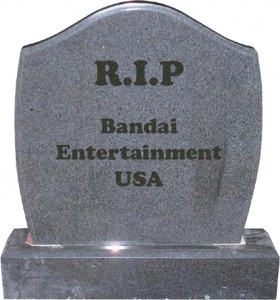
Welcome to the NHK DVD Review
A new year brings with it a new review! The Welcome to the NHK review has been added to the reviews section. Here’s a direct link.
Welcome to the NHK was the first SD series I reviewed. As a rule of the thumb I won’t lower grades of series that have visual issues on modern HDTVs if they were created in SD and don’t have an HD master or upscale available. That is, unless they look outright awful today.
Here’s an interesting bit of trivia I found while watching the series that didn’t quite make the cut for the review: the three alien-like baby creatures Sato keeps imagining are refered to in the English credits as Hikikomorians. All three Hikikomorians have different voice actors despite the fact that the only audible thing they do on the show is laugh sinisterly or cry out in fear.
If you are interested in the light novel that inspired the anime series you might want to check Brian Ruh’s article on it. He also addresses the notion of hikikomori in general.



